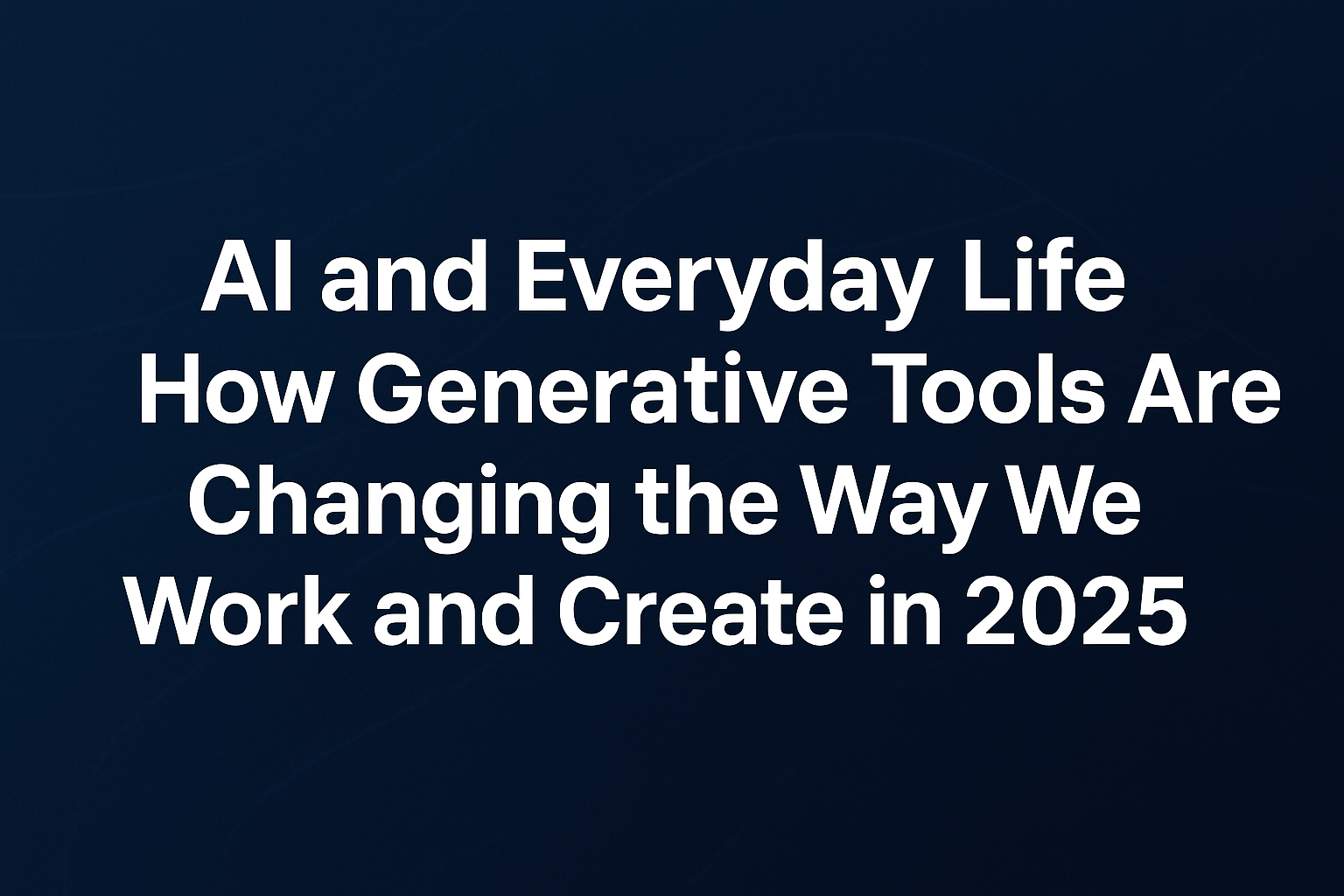Artificial Intelligence (AI) is no longer reserved for tech giants and research labs—it’s now a powerful part of daily life. In 2025, generative AI tools are transforming how we work, create, learn, and live. Whether you’re writing an article, coding an app, or producing a video, AI can be your creative partner.
What Are Generative AI Tools?
Generative AI refers to models that create content—text, images, videos, audio, and code—based on training data. Popular tools in 2025 include:
- ChatGPT – for text, code, and research assistance
- Sora – AI-powered video creation
- Midjourney & DALL·E – for artistic image generation
- Runway ML – for creative media and video editing
- GitHub Copilot – coding assistance and automation
These tools act like collaborators, not just tools—helping users accelerate ideation and creation.
1. Enhancing Productivity Across Professions
Writing & Communication
Marketers, writers, and bloggers now use AI to:
- Generate blog post ideas and outlines
- Summarize long documents
- Enhance tone, clarity, and grammar
Example: A content team can create a week’s worth of blogs, newsletters, and ad copy in one day using tools like ChatGPT and Jasper.
Software Development
Developers are coding faster using GitHub Copilot and Tabnine, which can:
- Autocomplete lines of code
- Suggest bug fixes
- Convert code between languages
Administrative Work
AI assistants handle tasks like:
- Email management
- Meeting scheduling
- Data summarization and report generation (via Microsoft 365 Copilot)
2. Revolutionizing Creativity and Content Creation
Design & Visuals
Artists and designers use tools like Canva AI, DALL·E, and Midjourney for:
- Brand kits and logos
- Concept art
- Social media graphics
Video & Animation
Platforms like Sora and Runway ML enable creators to:
- Generate videos from text prompts
- Animate characters and avatars
- Add voiceovers and visual effects
Music & Audio
Tools like Suno and Aiva help musicians and content creators:
- Create background scores
- Generate royalty-free music
- Edit audio automatically
3. Personalizing Education and Learning
Tutoring & Study Assistance
Students use ChatGPT, Khanmigo, and Socratic for:
- Homework help and explanations
- Essay review and feedback
- Personalized quizzes
Teacher Tools
Educators now design interactive lessons, assessments, and presentations in minutes using generative AI platforms.
4. Supporting Mental Health and Wellness
AI is also enhancing well-being:
- Mental health: AI chatbots for therapy-like support (e.g., Woebot, Wysa)
- Fitness: Personalized workouts and diets (e.g., Fitbod AI)
- Mindfulness: Guided meditation and journaling apps using AI suggestions
5. Empowering Entrepreneurs and Small Businesses
AI tools are enabling solopreneurs to do the work of an entire team. Use cases include:
- Creating business plans and investor decks
- Generating product descriptions and SEO content
- Managing customer service with AI chatbots
Ethical Considerations
While AI is powerful, it comes with challenges:
- Bias: AI may reflect societal biases present in training data
- Job disruption: Certain roles are being automated
- Ownership: Unclear rules about rights to AI-generated content
Responsible use, transparency, and human oversight remain critical.
The Future: AI as a Partner, Not a Replacement
The narrative is shifting. It’s not about humans vs. AI—it’s about humans with AI. The most successful professionals in 2025 are those who:
-
- Embrace AI tools
- Focus on strategy, creativity, and empathy
- Adapt quickly to new technologies
Final Thoughts
AI is already reshaping our work, creativity, and daily routines. As these tools become more accessible, the opportunity to innovate and grow expands for everyone—regardless of industry or skill level.
Have you used AI tools in your life or business? Share your experience in the comments below!


